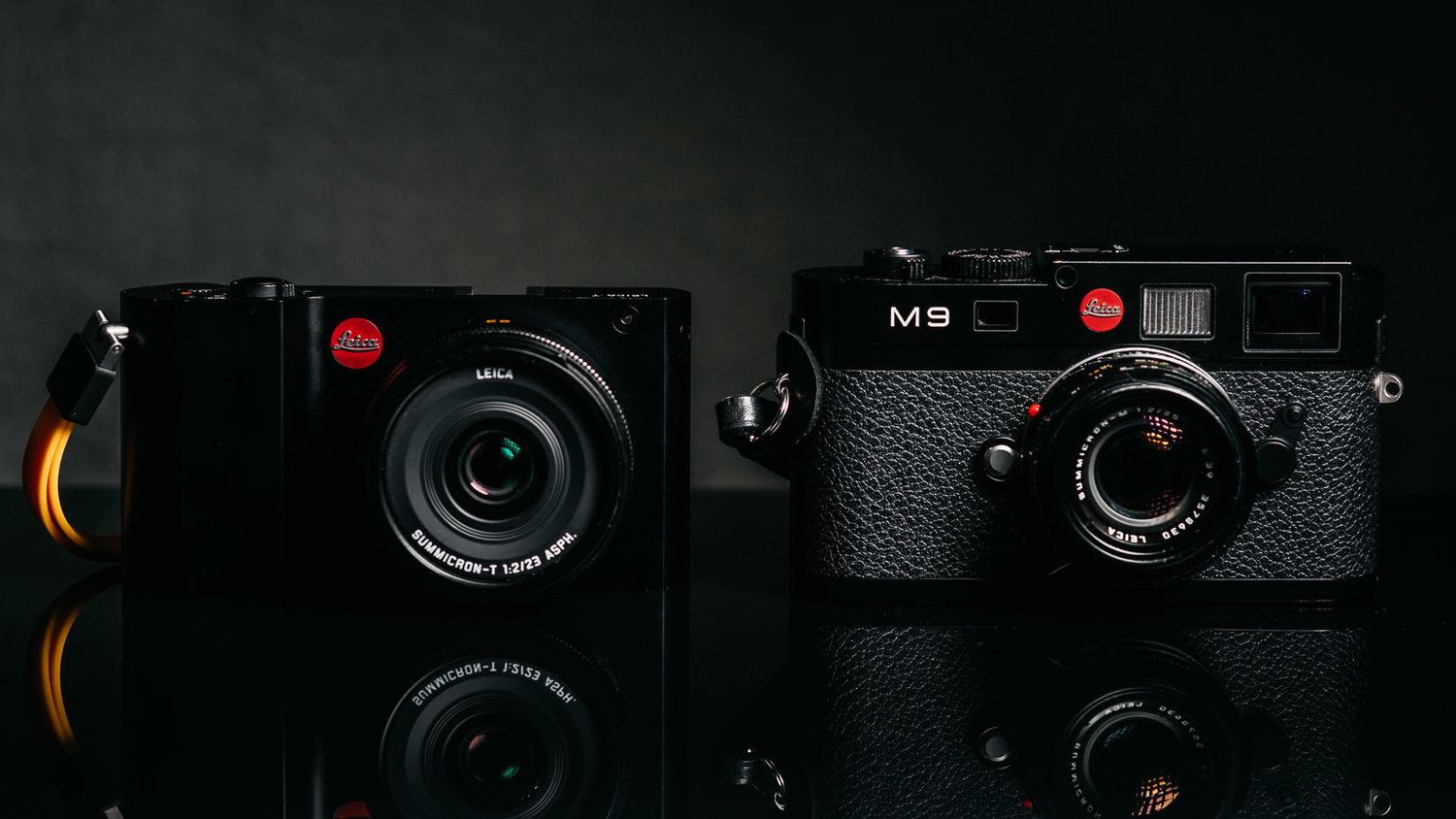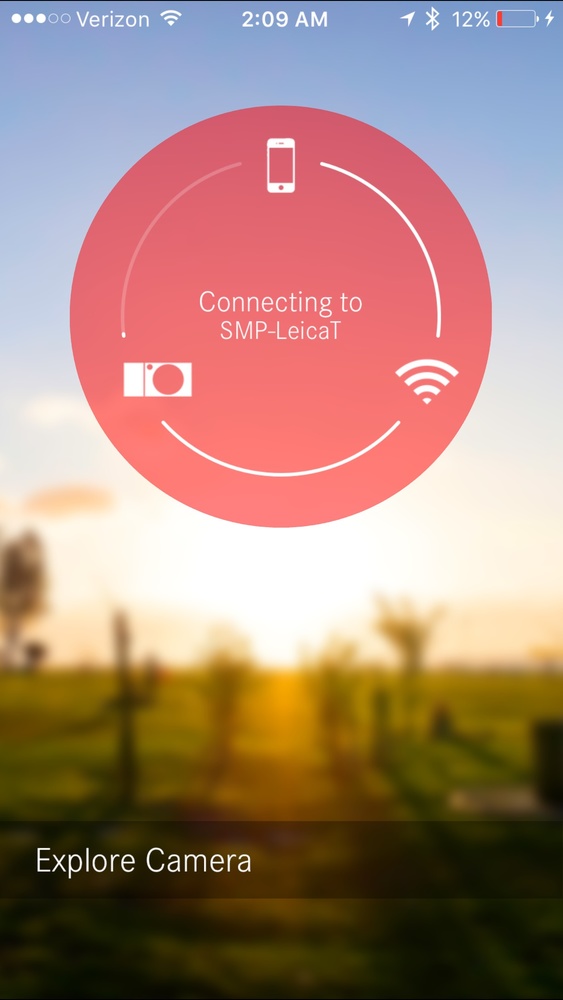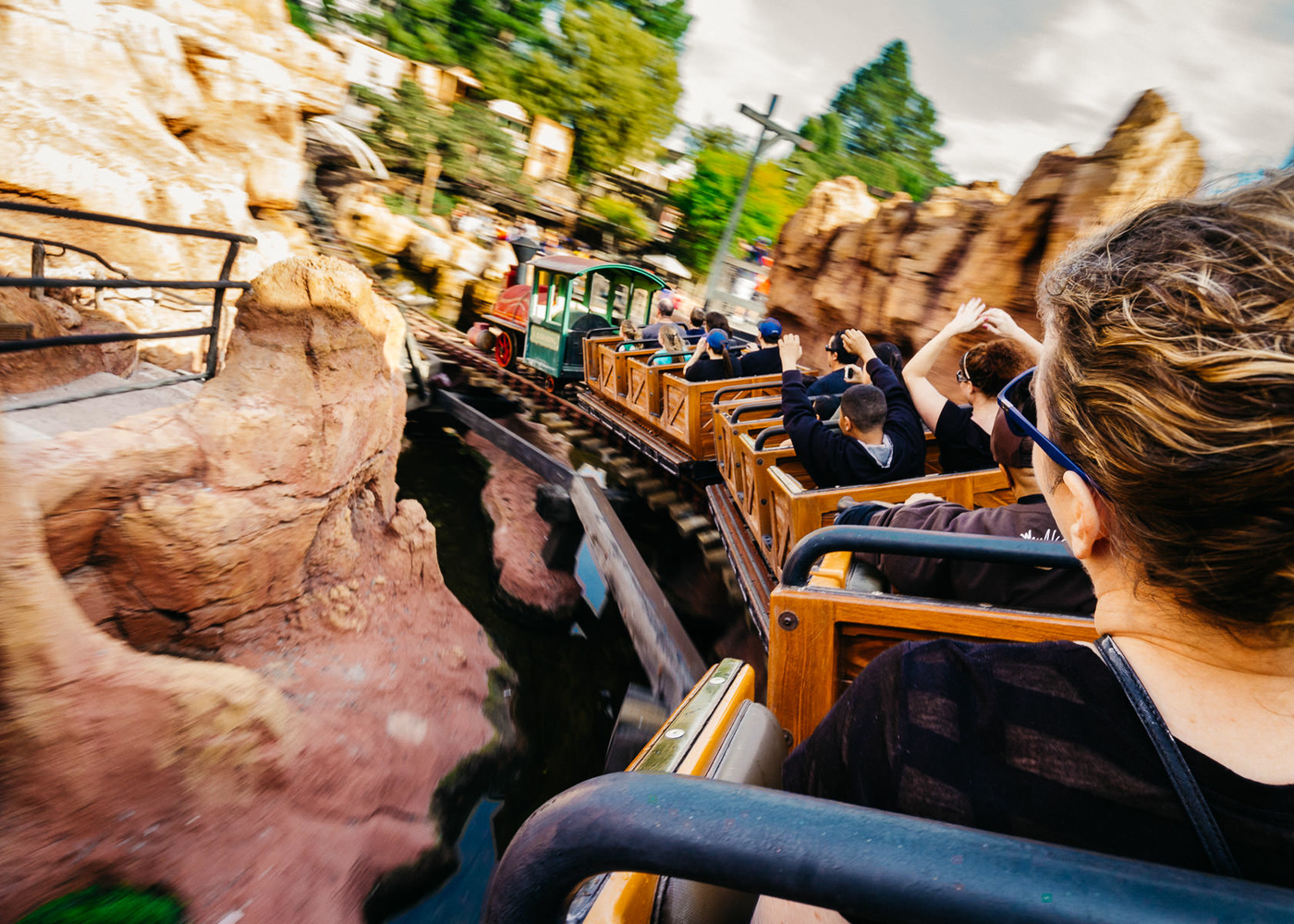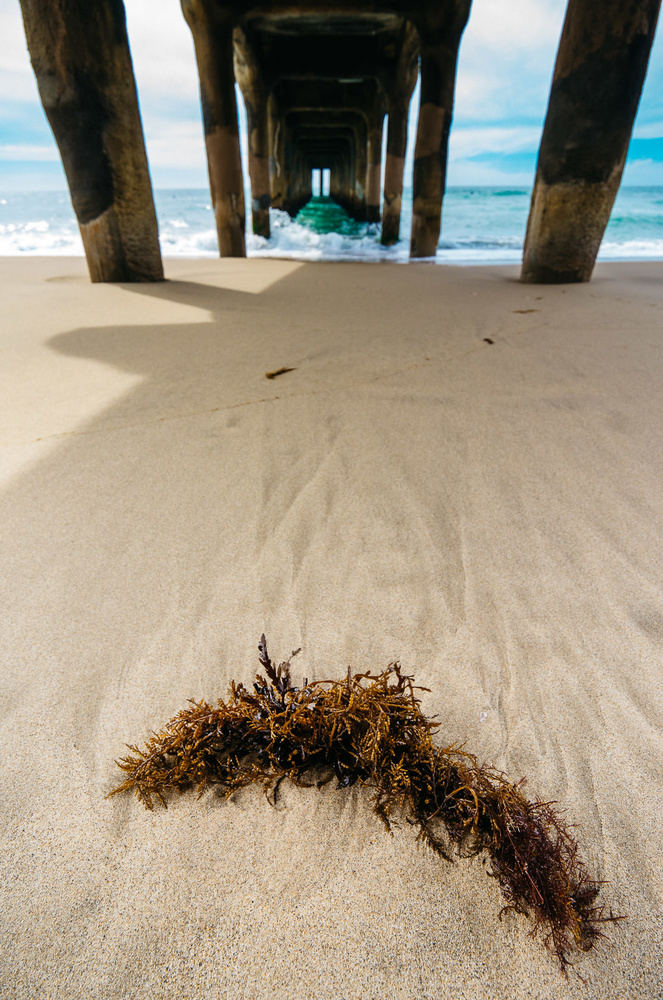It's been two years since the Leica T was revealed. Touting an undeniably sexy unibody design and a brand new lens mount, the T showed that Leica was serious about staying relevant in a technology-focused climate. While the camera was universally praised in most regards, particularly for the body and interface design, there were certainly some unpleasantries in the way of performance. But that was two years ago, and a lot's changed. Leica has stayed committed to their aluminum wonder, and it has slowly evolved into a serious little machine worth a second glance.
For nearly 100 years, Leica was a company with a pretty singular, conservative vision. While Leica revolutionized photography by, essentially, inventing the 35mm camera, the word "revolutionary" became relegated to a footnote in their history. After inventing auto focus technology in the 1970s, they sold off the patents to Minolta because the idea of auto focus didn't really fit their principles. Even the Leica M of today has seen remarkably little change since the first M3 in 1954. So you can appreciate the gravity the T produced on announcement. It appeared that almost overnight Leica had come into the 21st century, and not just on paper.
The Body
The Leica T is immensely beautiful. The industrial design was done by Audi Design and the result is a camera that will likely end up in a modern art museum at some point. Leica has made a lot of fuss over the fact that each and every T is carved out of a solid two and a half pound block of aluminum and becomes a svelte chassis of just over three ounces that spends 45 entire minutes being hand-polished before being anodized in either silver or black. You can see this polishing process in action by watching "the most boring advertisement ever made." What allows Leica to take such a striking manufacturing departure from traditional cameras is by literally thinking outside of the box. While a traditional camera is a box that houses the camera's electronics, the Leica T is a frame in which the electronics are then attached to. This cuts down on weight and materials, but most critically it creates an astonishingly stiff piece of kit. In your hand the T feels unlike anything you've ever felt before; there's not an iota of flex. The camera may be expensive, but at least it feels and looks the part. Ergonomics are well-thought-out and everything is designed to fit the average human hand pretty perfectly. Switches are just where they should be within finger reach. The integrated hand grip is just smooth, pure anodized metal with no additional features that would assist with traction, but for some reason it doesn't feel all that slippery slippery and you get a remarkably sure "footing" on the camera. If you work in particularly humid climates or have oily skin, you may want to take some extra precautions with a case of some sort.
Traveling light is the game. While the T is not pocket-sized by any means, it's a fairly petite little thing, especially with M lenses and the 23 f/2 Summicron. Some of the lenses make the whole package a bit bigger, but in any case, it's on the small side for an interchangable-lens mirrorless system. It's smaller in every dimension than even a Nikon 1 V. A more relevant comparison to the average person interested in a T would be against an M rangefinder. At its widest point, the grip, it's just 0.5mm thinner than the original M3 from 1954 and is one of the thinnest mirrorless cameras on the market. That puts it at a whole 10mm thinner than a current digital M like the Type 240. That grip quickly narrows to an unbelievably tiny body that is likely only possible because of the extremely rigid unibody frame.
Inputs and controls are few. On top, you get a power switch that snaps between "off" and "on." If you push the switch past "on" the flash will pop-up. This is possibly the coolest and most clever flash I've ever seen in a compact. Since it's hidden flush with the top plate, you'd never even realize it was there without activating it. From an operational standpoint I'm also very glad that Leica designed the flash to only operate if you choose to pop it up; it will never under any circumstances pop up because it "thinks it should." Frankly, you're not going to want to use it much anyway. It has a paltry guide number of about 15 feet, and it is easily blocked by larger lenses anyway. Next to the power switch is a record button for video, and then in front of that are two spinning dials that are user-programmable depending on your shooting mode. On the side where your palm rests, there's a hinged plastic door that hides the SD card slot and USB port. It's worth noting that this small plastic door is the only piece of plastic to be found on the entire camera, or lenses for that matter. Don't worry, it feels solid and unlikely to break.
On the bottom of the camera there's a tripod socket and a battery release switch which activates an extremely smart and clever battery retention system to prevent them for falling to the ground. Flip the switch (which requires conscious effort to do so), and the battery pops out a few millimeters with a satisfying and forceful click. Then you counter-intuitively push the battery back towards the camera ever so slightly and it clicks yet again, and at this point the battery is totally freed. In order to keep the camera as small as possible, the batteries themselves have part of the bottom plate integrated. The battery is actually part of the camera when installed. It has its own "battery door" attached. And yep, the plate is even metal to match the T's finish, which yep you guessed it, means you have to buy the batteries that match your camera's color.
Another interesting and controversial design element is the apparent absence of strap lugs. There's actually a small paperclip-sized hole on each side of the body where straps would go. If you stick the included tool (or a said paperclip) in there, out pops a plug that you can remove to reveal a larger hole for straps to attach into. The upside is that this is a really clever system for maintaining perfect form in the design, and it really does have that in spades. There are several downsides, though. The first is that connection is proprietary. Leica sells several straps designed specifically for the T that have the lug attachment, and due to popular demand then eventually began selling universal lugs so you can use any strap of your choosing. Match Technical (maker of the popular Thumbs Up) also sells a version of these. In my time with the T, I did fall in love with Leica's own rubber wrist-strap though. The attachment on it has a universal joint allowing free 360-rotation which is a wonderful touch and something I'd love to see more straps include. The rubber comes in a number of nice accent colors and has just enough stickiness to provide some additional security. If you're a wrist strap user, there is a nice form benefit with the T's lugs because you don't have to remove the lug from one side, which maintains that beautiful clean look. On the other hand, another downside is you have to be very diligent in not misplacing the little plugs that go flush with the body. The Leica T's box has little holes cut out in the foam for you to place them when not in use, but you have to make sure you take advantage of that. I can only imagine the cost and difficulty in replacing them.
The Screen & Interface
It's pretty funny to be talking about the Leica T in light of the recently announced Leica M-D. While the M-D is totally devoid of a screen, the T is almost entirely a screen. And boy, what a screen it is. The entire back of the camera is dominated by a 1.3 million dot 3.7" touchscreen LCD. When I say dominated, I mean it; there's not a single button or switch on the back. The back of the camera doesn't just have a screen, it is a screen.
It's important to note that a touch screen interface is only as good as its software, though. Generally, camera companies are notoriously bad at designing software, and I admit that I was extra weary at the thought of such a small, conservative company attempting to design a camera that essentially uses a smartphone interface. But I'm thrilled to say that Leica knocked this one out of the park. It's especially shocking because an "old school" company has in many ways has set a new benchmark in modern camera interfaces. It's very much like a modern smartphone with large icons that can be dragged around. The camera features are organized like apps and you can use common gestures like swipes and pinches when reviewing photos.
When you turn on the T you're immediately in the shooting mode. On the right side you have three soft buttons. The top is shooting modes, the middle is the menu, and the bottom "Info" button toggles between shooting overlays like grids and histograms. It's pretty awesome that without going into a menu you are always just taps away from having as much or as little information as you want on the actual picture taking screen. Shooting modes are pretty self-explanatory, with the usual suspects like manual and priority modes. As this is positioned as a consumer-friendly camera, you do get scene modes for things like sports, candle light, and sunset. As a professional camera snob, I initially turned my nose up at things like this, but when I realized what this camera was really for and how I can add it into my daily use, I began to allow more and more automatic features to take over. The scene modes are actually quite convenient and practical. Don't knock it till you try it.
The menu button brings up an "app drawer" sort of screen. This is actually your favorites menu. You'll want to organize this with all the features you want to change on a regular basis. You can organize them in any order you see fit and they're always just one touch away from the shooting screen. If there's an app you don't want in your favorites, just drag it to the trash can on the right that will activate once you start dragging the icon. The top right icon is a wrench and screwdriver and this is where you access the master list of settings. From here you can drag them to the right side of the screen to add them to your favorites list. Again, it's all very intuitive. Just drag apps to where you want them to go!
By and large the entire interface is extremely intuitive and can be figured out without a manual if you just sit down and dig through it. The one gesture that seems to garner the most complaints is that you have to swipe up from the bottom of the screen to activate the playback mode. I happened to figure this out on my own (probably accidentally) in the first couple minutes of use, but my wife needed me to tell her how to do it. She couldn't figure it out. But, of course, once you know how to do it, the problem no longer exists. There are some other little oddities, though. Since the T's entire operating system forgoes any sense of traditional menu, most icons are designed to be tapped repeatedly to cycle through options. This is great for icons with just a couple things to choose from, like "self timer" where you get three options of OFF, 12 seconds, and 2 seconds. ISO, on the other hand, has nine options of AUTO and then 100 through 12,800 in full stop increments so you are sent to a list for this. Sure, that makes sense and works fine, but why does "Flash Mode" have a list when it has the same number of options as "JPEG Resolution" that is a cycling tile?
Another commonly discussed point of contention is auto review where the image you just took shows up on the screen for a set duration. With firmware v1.2 an option for "Off" was added since before that it could not be disabled. Well, it still can't. Even selecting "Off" has nearly the same effect of the "1s Duration" option. Also, it's worth noting that while the EVF will show you the auto reviewed image, there's no way to browse your image library with it. It partially makes sense since you have to activate image review with that swipe gesture anyway, but I guess there's no reason you couldn't use the thumb dials to move through them afterwards with the EVF.
The most truly frustrating layout issue I ran into was with regards to spot focus. This is the option that lets you use the smallest and most precise focus point, but you can't just touch the screen in shooting mode to move it. You have to press the menu icon, then the "Auto Focus Mode" icon, then the arrow next to the "Spot" menu item, and then and there can you move and adjust the point. I honestly don't get this decision at all. You can do this from the shooting screen when using the "Touch AF" and "Touch AF + Release" options. It feels like the two features were designed by different teams.
Despite the nagging here and there, I think the Leica T has an absolutely brilliant user interface. Most everything is logically accessed and/or changed with just a dial spin or a touch or two. Leica has really done what it takes to show the world what a modern camera interface can be. I think almost anyone can come around to truly love in within just a few hours of use.
The Sensor & Shutter
Under the hood you've got an Sony-designed APS-C sized CMOS sensor with 16.3 million pixels. That doesn't sound like a lot, especially with 30 and 40 megapixel cameras being commonplace, but it was probably a pretty smart move on Leica's part. This is essentially a point-and-shoot for professionals and enthusiasts. Not only is 16 megapixels plenty for all but the absolute largest of gallery prints (and it's arguable that's not even a problem), but the lack of an AA filter makes images sharp enough to push enlargement even further. I think it's fair to compare the resolution capabilities to 18 and 20 megapixel cameras that do have AA filters. Maximum ISO from the T is 12,800, and I'm completely satisfied with its performance in real-world usage. There's nothing really cutting edge about the sensor's abilities, but it's no slouch compared to even the best cameras in its class from 2014. I'm perfectly happy with images at ISO 6400 for casual work, enough to set that as the auto ISO's ceiling. Dynamic range from 100 to 1600 is competitive with similar cameras and, interestingly enough, the Leica T's measured ISO sensitivity is around 2/3rd stops higher than most competitors meaning that ISO 1600 on the Leica T is actually closer to ISO 2500 on the Sony A6000. Not all ISO numbers are created equal.
The camera allows you to select between a number of JPEG and raw DNG options for saving your images. While raw DNG files will always been the full 16 megapixels, you can select JPEG sizes of 16, 12, 7, 3, and 1.8 megapixels. The one glaring option that is missing though, is the ability to shoot DNG only. You are required to shoot JPEGs no matter what, and upon some research it appears this is just what Leica does with their consumer cameras (the X series included). While it doesn't really create any actual problems, it's certainly odd, especially since you can choose to shoot only JPEGs.The shutter runs the gamut from 30 seconds to 1/4000th of a second and actuates with a satisfying clunky click. Flash sync maxes out at 1/180th of a second. Video does 1080p at 30fps.
As with most Sony sensors, highlights are easily blown, but there are mountains of shadow information that can be recovered from the raw files. Definitely err on the side of under-exposure, and since I find that the Leica T's meter tends to like brighter exposures, I'd go ahead and set the exposure compensation somewhere around -2/3 to -1 and just leave it.
The Lenses

Lenses for the Leica T from left to right: Vario-Elmar-T 18-56mm f/3.5-5.6 ASPH, APO-Vario-Elmar-T 55-135mm f/3.5-4.5 ASPH, Summicron-M v4 35mm f/2, Summilux-TL 35mm f/1.4 ASPH, Super-Vario-Elmar-T 11-23mm f/3.5-4.5 ASPH, Summicron-T 23mm f/2 ASPH.
When the T was announced, there were just two lenses available for the brand new L-mount (called the T-mount at the time). Those lenses were a 23mm f/2 and an 18-56mm f/3.5-5.6 "kit lens." Since then we've also gained a 11-23mm f/3.5-4.5, a 55-135mm f/3.5-4.5, a 60mm f/2.8 macro, and also an incredible 35mm f/1.4. After getting to play with every single one of these lenses for a few weeks, I have to say my personal favorites were the Summilux and the wide zoom. You can read my entire review on the Summilux 35mm, but I will say that the 11-23 is possibly one of the best wide zooms ever made by anyone, and I have the Nikon 14-24. It's just insanely sharp from corner to corner, even wide open, with beautiful color and contrast rendition. It's truly wide with a ~16.5mm full frame equivalency but also has a practical wide range all the way up to a 35mm equivalency. The size is remarkably small as well for having such a nice range and keeping the maximum aperture range hovered right around f/4.
Unfortunately each lens is right around $2000 a pop. Yes, they're Leica lenses. You are definitely getting what you pay for, but your Leica T system can get extra-expensive, extra-fast. The silver lining is that you can get an adapter to use M lenses. If you've already got M glass, then you've already got a leg up in the lens department. Of course you have to focus manually, but the T does have a zoom focus assist to help. If the camera is missing any major feature, it's focus peaking. For a camera that pairs so incredibly well with manual M glass, it's really a shame to be missing such a helpful tool.
The Viewfinder
Yeah, there isn't one. Not natively at least. You can purchase the Visoflex Type 020 electronic viewfinder that slides right into the hot shoe. No configuration necessary. Just put your eye up to the viewfinder and the camera automatically switches from the external display to the EVF.
I have a very intense love/hate relationship with the Visoflex. I love it because it does feel natural to put your eye up to a camera. I hate it because there's just-annoying-enough 1 second delay for the camera to detect your face and turn it on. I love it because the 3.7 million dot screen is fantastic and the refresh rate is extremely fast. I hate it because it makes the touch focus features on the camera almost unusable since you can't touch the screen while your face is covering it. I love it because it tilts completely making ground-level compositions a piece of cake. I hate it because it's so expensive. I love it because it makes it easier to work in very bright lighting conditions, even though the main screen is pretty good at cutting through sunlight. I hate it because it's fairly large and kills the minimalist Bauhaus aesthetic of the camera.
Can you live without the Visoflex? Yes, you can. No matter what anyone says, it's not essential. The only additional camera function it adds is a GPS receiver for geo-tagging your images. I'm not saying you shouldn't get one, but if you're trying to count your pennies on any level, you can hold off on the EVF for a while. With that said, there are plenty of reviews of people who find it invaluable.
The Performance
The story of the Leica T's two years on this earth could have ended upon release. Landfills are littered with the corpses of cameras, cell phones, and other gadgets that were essentially ignored by their creators upon release, plagued with bugs features that were critical to the sustainability of the product. I'm just going to call a spade a spade: the Leica T was a frustrating and flawed machine for a while. Startup times were regularly five, ten, or even twenty seconds depending on your SD card. Auto focus could be dreadfully slow and inaccurate. The touch screen fluctuated between unresponsive and hair-trigger. Most Leica T reviews on the internet are from around launch, and they'll all say the same things. The headline typically reads along the lines of "All form, no function." It was a beautiful camera with a quirky, unpredictable electronics system.
It's a whole new ballgame now. As one DPreview user wrote:
Then the 1.4 update arrived, and it's like an entirely new camera. Performance is noticeably better across the board. Startup time, AF speed, it's much faster. People knocked the performance at launch, but now, it's a corker.
It should really get re-reviewed by camera sites.
In October of 2015, Leica's v1.4 firmware update doubled auto focus speed, tripled touch screen responsiveness while fixing the unpredictability of pinch zooming, and dropped startup times to under one second. Fortunately this was all possible because the camera is essentially a computer, even more so than most. While Leica has shown serious interest in continually improving the T even two years later, I wouldn't expect them to add features. They've shown great restraint here, and I really should applaud the decision. Everyone wants everything to do everything, but it appears that Leica knows exactly what the T should and shouldn't be, and they aren't allowing it to become bloated or get out of hand.
Speaking of auto focus, it's pretty damn good in all but the absolute lowest of lighting conditions and is very impressive for a contrast-detect system. I didn't really notice any major variance between different lenses, but the ones with larger apertures did seem to be slightly quicker. None of the lenses are slow to focus at all. If you "used a Leica T once" and found it to be a dog, you really need to try it again.
Battery life is good, but not stellar. Coming from my M9 it feels amazing, though. The CIPA rating is 400 shots per charge which is not bad considering the large screen and how much use it gets. I didn't do any exact counts, but I'd say this is probably pretty accurate in real-world view with basic power-saving settings and techniques. The only practical problem is that additional batteries are expensive and because of that integrated aluminum plate that makes up the bottom of the camera, there will probably never be any 3rd party options.
Special Features
The Leica T has some wireless connectivity in the form of Wi-Fi and GPS. Like I mentioned above, in order to enable GPS it is required that the Visoflex EVF is attached to the camera since that's where the receiver is housed. The Leica T is metal and there'd be nowhere to put the receiver unless they wanted a plastic panel somewhere on the top. I can live with that compromise. The Wi-Fi, however, is integrated and is actually quite nice. There are two primary features of the Wi-Fi; the first is to transfer images quickly to your phone for instant publication, and the second is to use your phone as a remote viewfinder. With the most recent (as of this writing) v1.5 firmware you can directly connect your phone to your Leica T without the need of an intermediate network. This is absolutely fantastic when you're out in the field without a Wi-Fi network. I briefly played with the basic Wi-Fi features and they appeared to work just as designed with reasonable speed and ease. The remote viewfinder mode worked extremely well, although I would have liked the ability to utilize more of the camera's settings this way. If it was a fully remote control instead of just a basic viewfinder and trigger, that'd be something pretty special indeed.
The T includes 16GB of internal memory. The more I think about it, the more I'm amazed this is considered a "special feature," but it is. Very few cameras, especially nicer ones, have anything more than a small "demo memory" for storing a few test shots that get deleted automatically after a minute. I think it would be extremely handy if all cameras had some serious built-in storage, if even just for emergencies since, I'd be lying if I said I have never showed up to a shoot and left my memory cards at home. Not only that, but it'd be nice to just pick up a camera and go if you're in a hurry and don't happen to have memory cards laying around. There's no setup involved. If you want to shoot on the internal memory, just don't insert a memory card. To get the images on your computer, you just hook up a USB cable to the Micro USB slot on the T. When you click on the "format" icon in the menu afterwards, it will ask you if you want to format the SD card or the internal memory.
The Good
- Easily one of the most gorgeous and modern digital camera designs ever, available in both black and silver finish options
- Uncompromising all-metal build quality with ultra-rigid frame
- Very big, bright, and beautiful display with groundbreaking and easy-to-use touch screen user interface
- Focused no-nonsense feature set
- A well-rounded native lens lineup covering a 35mm equivalent range of 16 to 200mm compared of both zooms and primes
- Lenses are of typical Leica quality and some are objectively the very best in their classes
- Fast and accurate auto focus
- Produces razor sharp images due to lack of AA filter and quality of lenses
- Sony sensor allows for ample shadow recovery
- Has received regular firmware updates for two years
- Can use M-mount lenses with adapter
- Robust Wi-Fi capabilities and iPhone app
- Clever and unobtrusive flash
The Not-So-Good
- Extremely expensive compared to cameras in the same class
- Sensor technology, while perfectly adequate, is behind the curve
- Some UI controls, like spot focus, are a bit inconvenient
- EVF is a pricey extra and is pretty large compared to the small body
- No ability to really navigate or control the camera while the EVF is at eye-level
- Grip can be a bit slippery under certain conditions
- Requires special and optional lugs to use regular camera straps
- A bit heavier than similarly-classed cameras
- 18-55mm kit zoom is a bit slow at f/3.5-f/5.6, especially for the price
- Proprietary batteries are expensive with no third-party options, and batteries are color-matched to the camera body
- Requires EVF to utilize GPS data
- No way to totally turn off image review after taking a shot
- Weak on-axis flash
Final Thoughts
Let's just get it out of the way: If you want the best bang for the buck in a camera, look elsewhere. You can get better camera tech for much less money. There's no argument. But the reason I'm even talking about this hunk of aluminum at all today, is because the Leica T is really truly a special machine. It's the first "casual" consumer camera that I've personally experienced a real joy in using. In the hand it's a work of art; pure bliss in the form of metal and glass. When shooting, the camera just gets out of the way and lets you take photos. The images that come back sharp, detailed, and the DNG files are quite mailable. Additionally, recent firmware updates have transformed a frustrating slow-poke into a purposed and snappy machine. No, it's still not a camera designed for fast action, but that's what DSLRs are for. It's quite possibly, because of its size and absolutely incredible lenses, a perfect travel camera.
This is the camera I truly wish I could recommend to every person who asks what camera they should by for general every-day use and traveling. And on one hand, yes, I absolutely recommend it to everyone, just like I recommend a BMW M Series to anyone in the market for a daily driver. Ultimately it's going to come down to financial practicality. If you're someone who drives a BMW and owns every Apple product, then the Leica T is going to fit right at home. But for the same price as T and one lens, you can get a Nikon D750 with a 24-120 f/4 and have enough money left over for pretty much all the accessories you'll need for a great little kit. No, they aren't directly comparable camera rigs, but it does demonstrate the sort of firepower you can get for your dollar. If you're in the market for a Leica, you understand there's a "luxury tax" involved.
What you do get from the Leica T that you won't get from anyone else in the mirrorless world is focused simplicity forged in glass and metal. You're getting a cutting-edge, modern user interface without a reliance on menus. You're getting first-party access to Leica glass, and yes, the heritage; you get the red dot.
The Leica T sets a bar that all first-generation products should strive for.
Buy your very own Leica T from B&H.

































"...minimalist Bauhaus anesthetic..."
HA. Thanks for pointing that out. It's been corrected.
Perhaps I pressed a bit too much on the "essentially" qualifier. The format existed and a few one-off cameras that utilized did exist first, but they certainly made it "a thing." I was just trying to juxtapose the fact that they use to do cutting-edge things (the first Leica, truly inventing auto focus) against the conservative decision making that has as much as defined them for 100 years.
I'm personally not in a hurry to do test charts of any kind unless I'm the very first person on the internet to do them. I very much admire and appreciate the likes of DPreview, Photography Life, and other publications that do such tests on a regular basis, but once it's been done once or twice, I don't see the purpose. It's a very laborious and time-consuming process to do correctly, and if other people are anything like me, when I'm in the market for something I read as many reviews as I can find. I don't need them all to shoot brick walls and resolution charts.
With that said, I'm totally with you on full-sized samples in any case. I can appreciate those, and that's definitely something I'll do in the future. I've asked the Fstoppers site designers on a number of occasions to at least increase the maximum size of full-size image pop-ups, so hopefully that'll change soon. I really appreciate all the feedback in any case!
I bought a pre owned T with some accessories for a 60% discount. This was due to the average reviews. With each firmwear update the T became vastly more usable. This has given me the ability to fully trust Leica, a very refreshing trait for a manufacture.
This reads like "I've decided to like this camera no matter what, so here are some self justifications." Great. Grand. The Leica T is just a man's Berkin. Though I congratulate Leica on pioneering the first variable-aperture prime lens via the 23/2. I know it feels cool to be in an exclusivity club but you were better off lighting hundred dollar bills on fire.
Sounds like someone wants to be one of the cool kids but doesn't think he's good enough.
The T's are pretty sweet looking cameras.
What’s this camera bag? :)